

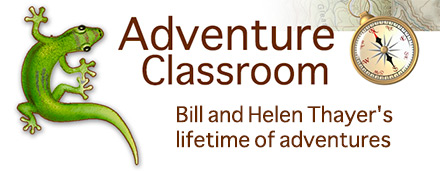
THE NOMADS OF THE GOBI
On the edge of the 21st century, Mongolia remains one of the only countries to retain its ancient culture and traditions. The extreme climate and geography as well as the landlocked condition greatly influenced the Mongol's way of life who have always lived close to their animals and the land. The Mongolian nomads are often called "Five-animal people" because the nomadic society is based on the five principal animals traditionally herded: horses, camels, cattle, sheep and goats. They also keep Tibetan yaks, used for producing milk and cheese. Mares are milked and the fermented milk is the Mongolians' favorite drink "the airag" which can then be distilled in an alcohol, "arkhi", a typical Mongolian vodka. Airag is offered as a ritual to the visitors. The camel they breed is the Bactrian camel, a two-humped camel able to endure the extremes of cold and hot. The camel as well as the yak is used as beasts of burden, especially to transport the dismantled ger from place to place. In Mongolia a settled agricultural life has not been possible because herders have to move from a pasture to another. Traditionally there are four seasonal moves but now most nomads move only twice a year — between summer and winter encampments.In 1990, a peaceful democratic revolution changed the whole system of government and the country is now open to the Western World. In its path to democracy and free market economy, Mongolia is experiencing an economic boom, with increasing volumes of international trade. New technology and fashion is coming into the country at a rapid rate, but is being adopted in the context of the traditional Mongolian way of life-hospitality, nomadism and lamaistic buddhism.
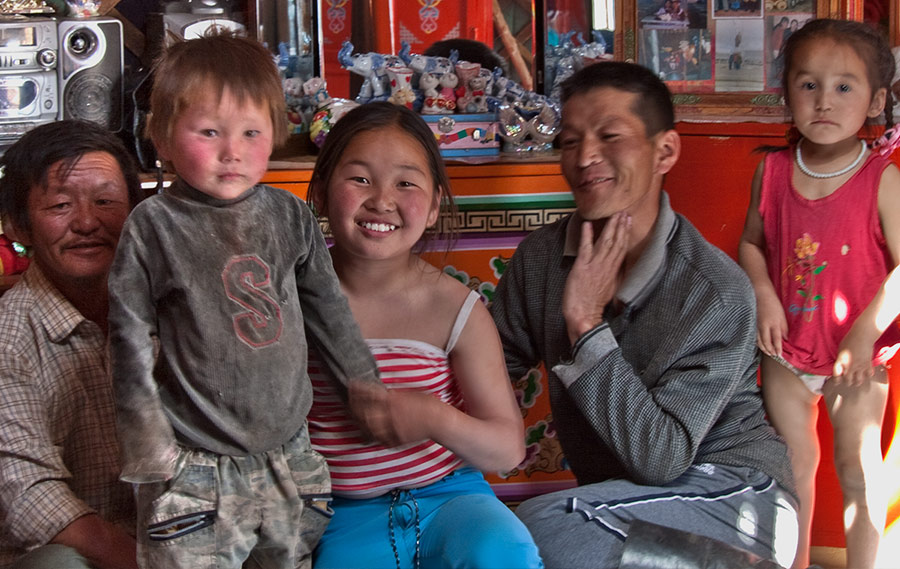
The horse is the most important of the animal. In Mongolia, everyone mostly respects the horse. It is even part of Mongolia's national emblem. It is said that children are taught to ride before walking. To catch the horse, Mongols use a polo-lasso called "uurga" consisting of a rope loop at the end of a very long pole.
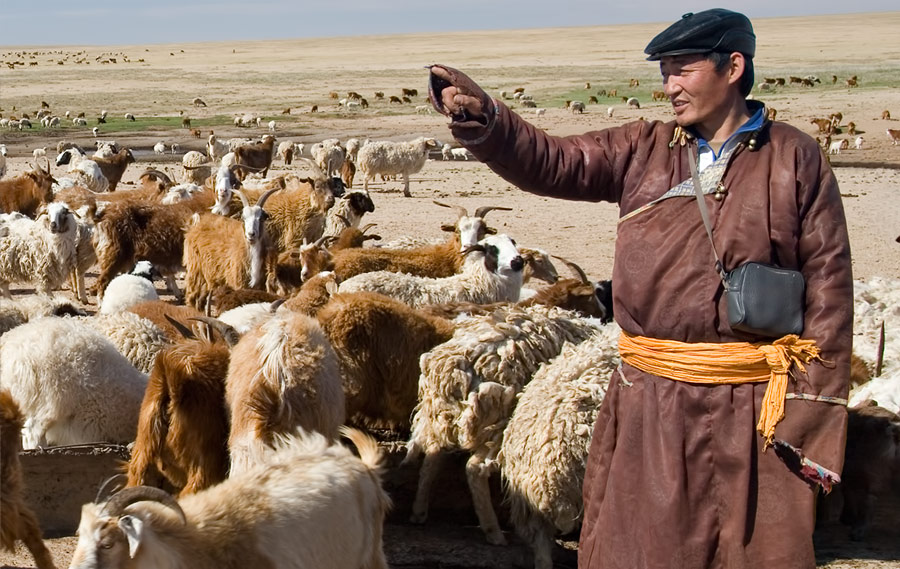
The nomads have developed a circular felt-covered dwelling, the "GER" (or yurt in Turkish language), adapted to the difficult conditions of their daily life (cold, wind, sun) and easy to be moved as can be raised and dismantled in 30 to 60 minutes. The gers have beautiful carved and decorated doors, south oriented. When entering into a ger, airag and cheese are and blown snuff bottles are exchanged. Today's ger design is the result of 2,000 years of history. They are collapsible and so light that they can be transported from one camp to the next on the backs of 2-3 camels, which until recently was the custom. These days however, people resort more and more frequently to hiring small lorries instead. The size of ger depends on the number of worm fences (4-5 on average, amounting to a diameter of 16-25 ft). They are made of pliable wood and are tied to each other with ropes. Next, the roof is erected and centered with the help of braces. To stabilize the tent during construction, a heavy object like a chest is suspended from the roof. (The same stabilization method is used to prevent the ger from collapsing during heavy storms.) The entrance to the ger consists of framed wooden door always facing south. Walls and roof are covered with layers of material, felt blankets and, finally, by a sheet of linen. The latter can easily be washed and protects the felt layer from the rain. The construction is lashed together by several ropes made of yak and horsehair.
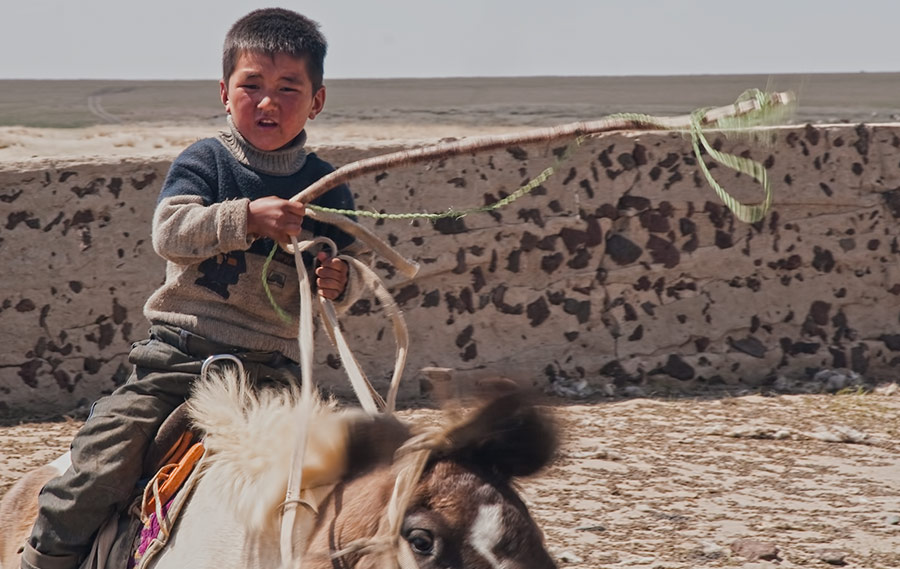
The Mongolian traditional dress is called the "DEEL". Cut in a very simple pattern (in one piece) and buttoned at an angle, it is worn with a bright-colored sash. When starting out on a journey, a Mongol traveler takes very little with him, as he knows he will be given a warm welcome at any GER that he might come across. The door of a lonely ger on the steppe is never locked and the weary traveler will always be welcomed with tea, mares milk yogurt and dried milk curds. Even if the hosts are out, the guest may light up the fire, have tea and rest before he leaves. The approach to a ger, and the rituals carried out in the giving and receiving of hospitality are covered by unwritten rules of etiquette, which every Mongolian knows and abides by. Even today, the tourist is met with the same warmth and hospitality. Payment is seldom received from travelers, as this is seen as an insult. However, it is quite acceptable to give gifts to the children of the home, who later on pass the gifts of value discreetly to the parents to cover the cost of the food.
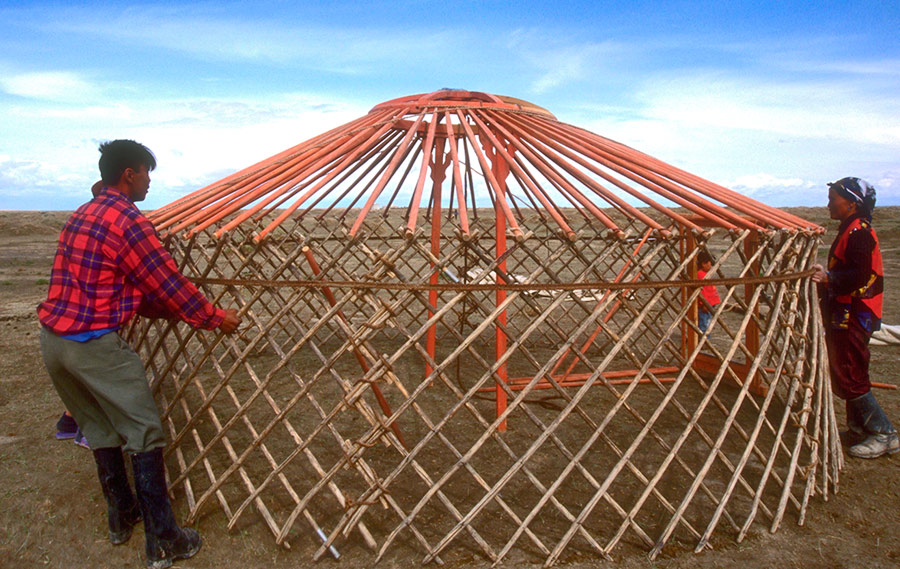
Every Mongolian home has a small Buddhist shrine, but the people also honor the shamanistic spirits on the hills and high points of the landscape. Mongolian Shamanism derives from worshipping nature. The Mongolians considered the earth "mother earth" and the sky "the father." The shaman acts as intemerdiary between the man and the spirits. Shamanism determined the behavior of nomads towards nature. Nowadays, shamanism is still practiced especially in the northern region, Lake Khovsgol. This respect for nature is still alive in the ritual of the "OVOO". Before going up a mountain, Mongolian people throw a handful of stones to a cairn-like pile (called "ovoo") and walk three times around this pile of stones. The honor the spirits Bottles of vodka and pieces of blue silk are also added to the stones. A driver will certainly stop without notice at the top of a hill to make this ritual. Ovoos are abundant in the countryside on mountain peaks or passes. Shamanism and Lamaism have both contributed to nomadic customs. In other words, this mixture of religious beliefs has led to many unique features of the Mongolian culture.
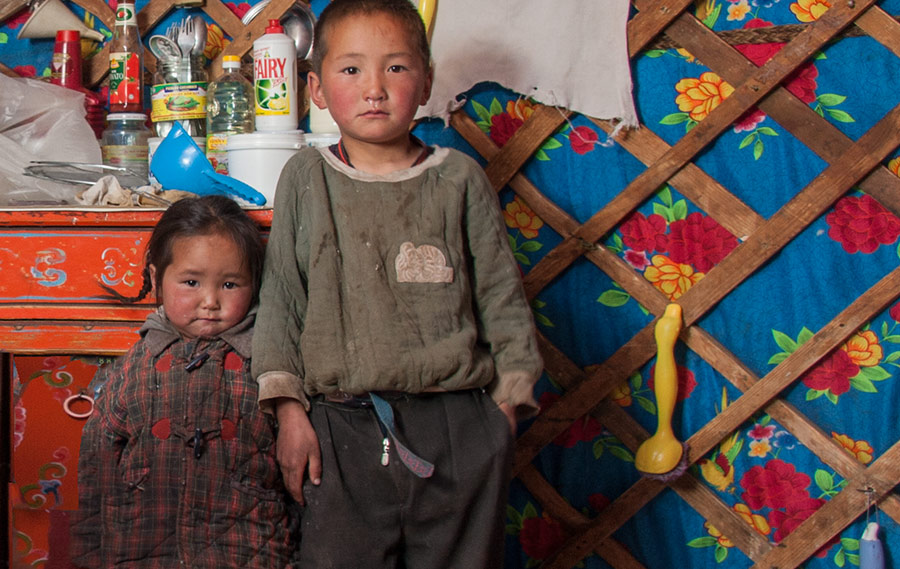
The Mongolian horse has always been a vital part of the culture, and has played a key role in the military victories of the skilled warriors. Mongolian soldiers were the first to use the skill of shooting arrows from galloping horse, much to the consternation of their enemies. Today, horse dairy products are a staple of the diet, and every musical instrument has a horse's head carve on it. Mongolian dance reflects this close relationship between man and horse. Mongolian legend claims that music originated in Mongolia, and the famous "KHOOMII" overtone singing is unique amongst all musical styles in the world. Men skilled in this form of singing are able to sing two notes simultaneously, producing a fascinating sound.
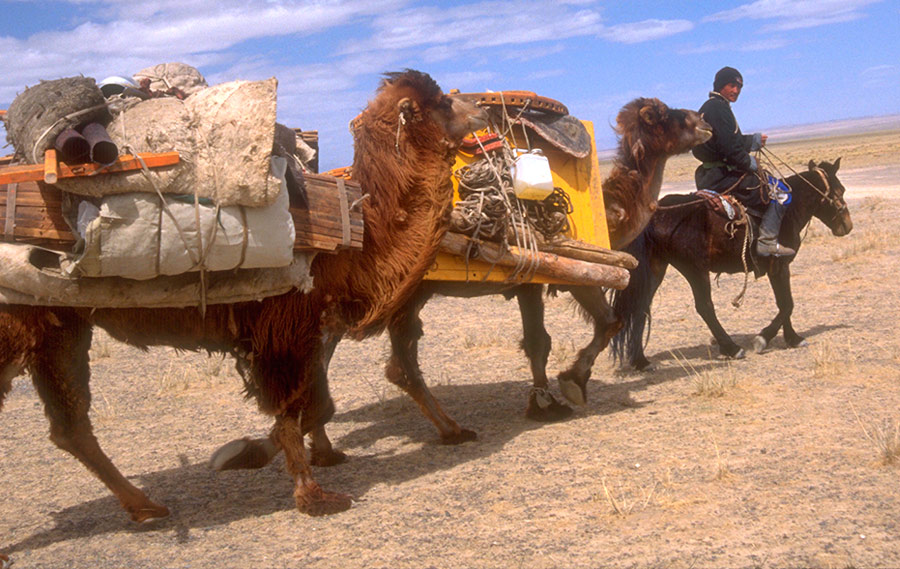
How not to offend Mongolians:
- Do not shake someone's hand with your gloves on. Remove them even if it's minus 40 degrees.
- After entering a ger, always move around the stove in a clockwise direction. Do not lean against the ger wall or furniture.
- Bowls of food and drink will be offered to you with either your host's right hand or both hands. Receive them also with both hands or your right hand.
- Squat or kneel on the floor and if seated on a stool, tuck you feet under-neath-do not stick them straight out in front of you.
Back to [Enduring Cultures Index]
